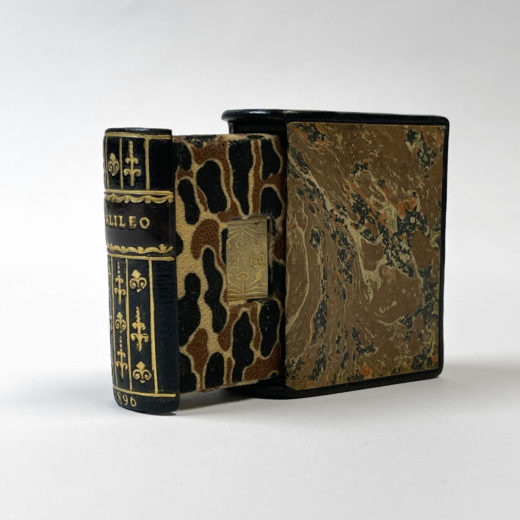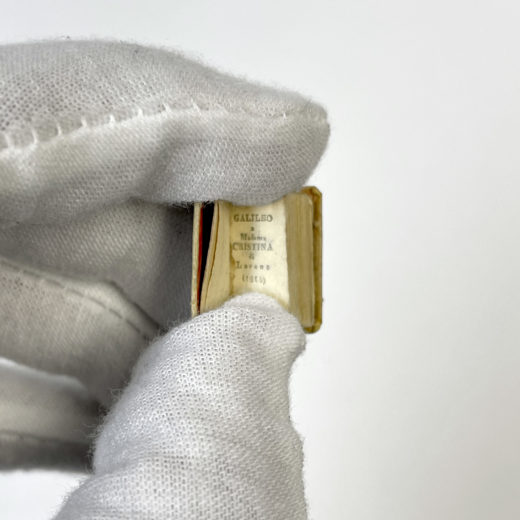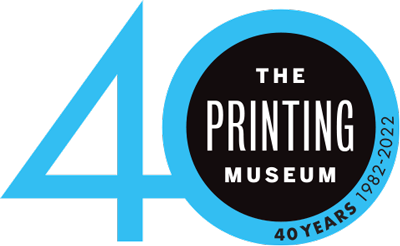

Published in Padua by the Salmin Brothers in 1896, the Galileo was until recently considered the smallest book printed from movable type, and it remains one of the most renowned miniature books in existence. The text is the Novantiqua, the famous 1615 letter sent by Galileo to his friend and patron Madama di Lorenza, in which he argues for the harmony of religion and science.
Miniature book expert Ruth Adomeit once remarked that this edition was the “greatest marvel of bookmaking in the history of miniature books.” (Four Thousand Years of Tiny Treasures, Grolier Club, 2006, A. Bromer and J. Edison.) According to Bromer and Edison, the 1896 edition created quite a sensation when released.
Measuring only .75 x .51 inches, the book uses the legendary ‘Fly’s eye type’ (Occhio di mosca) previously used by the publishers for their 1878 edition of Dante’s Divina Commedia. The type, cut by Antonio Farina in 1834 but never used by him, was cast in 1850 by order of Giacomme Gnocchi of Milan. The typeface is so small, at 2 pt, that it reportedly damaged the eyesight of the typesetter due to the difficulty of working so small.
Galileo a Madama Cristina di Lorena (1615) will be on loan to the Museum of Fine Arts Houston for the exhibition, Bookbinding Uncovered: Materials, Techniques, and Artistic Expression, and will be on display in the Hirsch Library Reading Room from July 14 – October 21, 2021.
